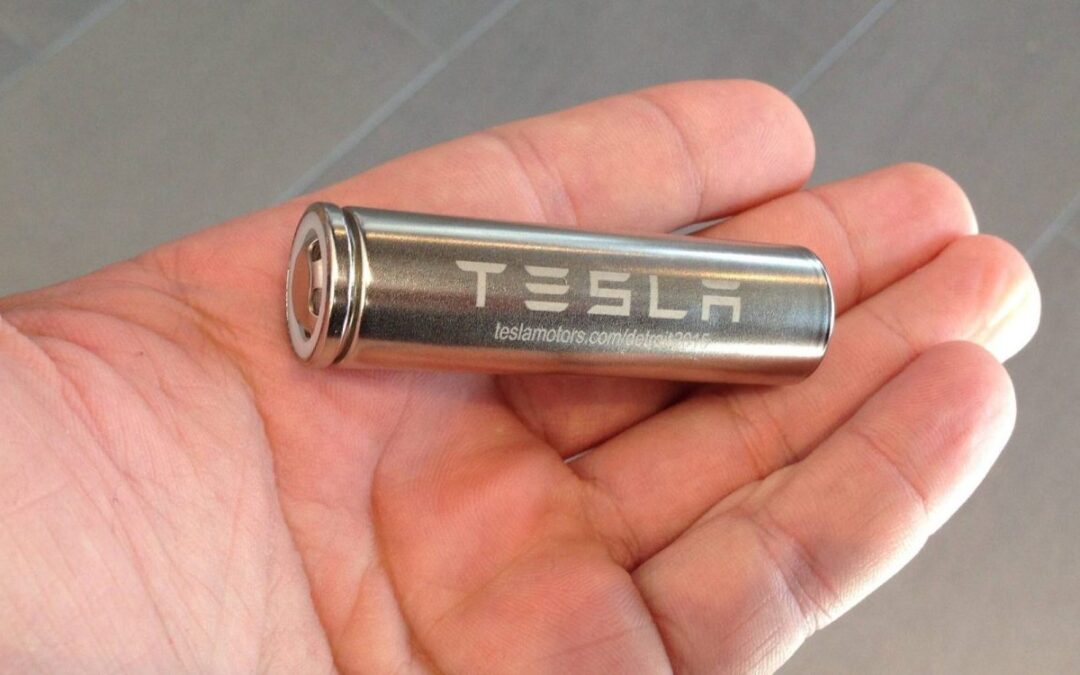Tesla patents a new NCA electrode that is likely going to be used in its new battery cell built in-house, which is expected to be longer-lasting and cheaper.
We previously reported on Tesla’s battery research partner, Jeff Dahn and his team at Dalhousie University, unveiling the impressive results of tests on a new battery cell that could last over 1 million miles in an electric vehicle.
The new battery tested is a Li-ion battery cell with a next-generation “single crystal” NMC 532 cathode and a new advanced electrolyte, which they patented.
They were able to show over 4,000 cycles in the battery cells made with the novel cathode.
Now Tesla is patenting “single crystal” NCA electrodes as disclosed in a recently published patent application called “Method for Synthesizing Nickel-Cobalt-Aluminum Electrodes.”
New studies by the inventors have identified a two-step synthesis process for preparing single crystal nickel-cobalt-aluminum electrodes. In certain embodiments, the two step synthesis process includes two lithiation steps. In the first lithiation step, in order to avoid forming Li5Al04 at high sintering temperature, precursors with Li/OM ratios of less than 1.0 (e.g. Li/OM=0.6, 0.8, 0.9, 0.95) are lithiated at higher sintering temperature, such as 800°C to 950°C. This sintering step might take between 1 hour to 24 hours depending on the temperature selected, the furnace configuration used and the final crystallite size desired. In the first lithiation step, Li(i-X)[Nio.88Coo.o9Alo.o3](i+x)02 is obtained. In the second lithiation step, in order to compensate for the lithium deficiency, the material is sintered with more LiOHTUO at standard NCA lithiation temperature (approximately 650 to 760°C) for approximately 12 hours. This sintering step might take between 1 hour to 24 hours depending on the temperature selected and the furnace configuration used. The amount of added LiOHTLO in the second lithiation step is determined by overall target of the Li/OM ratio in the final product. In some embodiments, in the first lithiation step if a Li/OM ratio of “b” is selected, then in the second lithiation step a further additional Li/OM ratio of“1.0 -b,”“1.01 – b”,“1.02 – b”, 1.03 – b”, etc. is selected depending on the amount of lithium loss anticipated in both the first and second lithiation steps. In other words, the sum of the Li/OM ratio in the first lithiation step and the Li/OM ratio in the second lithiation step is 1.0, 1.01, 1.02, or 1.03. In some embodiments, the goal is to make a final product with a Li/OM ratio very near 1.00 and with very little Ni atoms in the Li layer of the material (less than 2%).
A source familiar with the matter told Electrek that the new electrodes are likely to enable Tesla to achieve similar or better energy density than NMC batteries.
Hongyang Li and Jing Li, Tesla battery engineers and students of Dahn, as well as Dahn himself, are listed as inventors on the new Tesla patent.
They are also all listed on previous research related to Tesla’s latest advancement in battery tech by the group: here and here.
As we previously reported, Electrek revealed that Tesla is working on an internal secret Roadrunner project.
The goal is for Tesla to produce its own battery cells using technologies developed by Tesla’s internal teams, including work from Dahn’s team, and new technologies recently acquired through the acquisition of Maxwell, on a massive scale and at a cost below $100 per kWh.
Tesla has already tested prototype cells under the Roadrunner secret project. It believes it can produce the cells in volume and use them in its vehicles and eventually in its stationary energy storage products.
The automaker has been developing manufacturing equipment in secrecy, like the pilot production line in Fremont, over the last few months.
We expect to learn more about the project and Tesla’s new battery cell at the company’s next talk, which is now supposed to happen in May.
Here’s Tesla’s new patent application in full:
You’re reading Electrek— experts who break news about Tesla, electric vehicles, and green energy, day after day. Be sure to check out our homepage for all the latest news, and follow Electrek on Twitter, Facebook, and LinkedIn to stay in the loop. Don’t know where to start? Check out our YouTube channel for the latest reviews.
Source: electrek | By Fred Lambert | April 24, 2020 | https://electrek.co/2020/04/24/tesla-paten-electrode-million-mile-battery/
To learn more, contact us today!
Roberto Baires
Phone:888.531.3582
Contact us!
Micro Tech Resources | 5700 Stoneridge Mall Road, Suite 285, Pleasanton, CA, 94588



